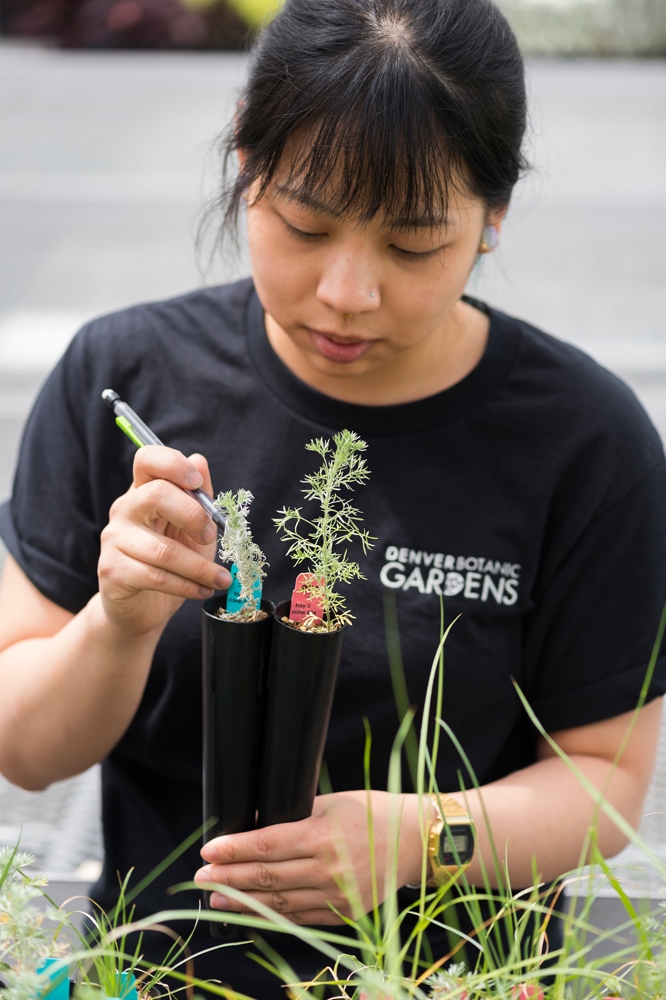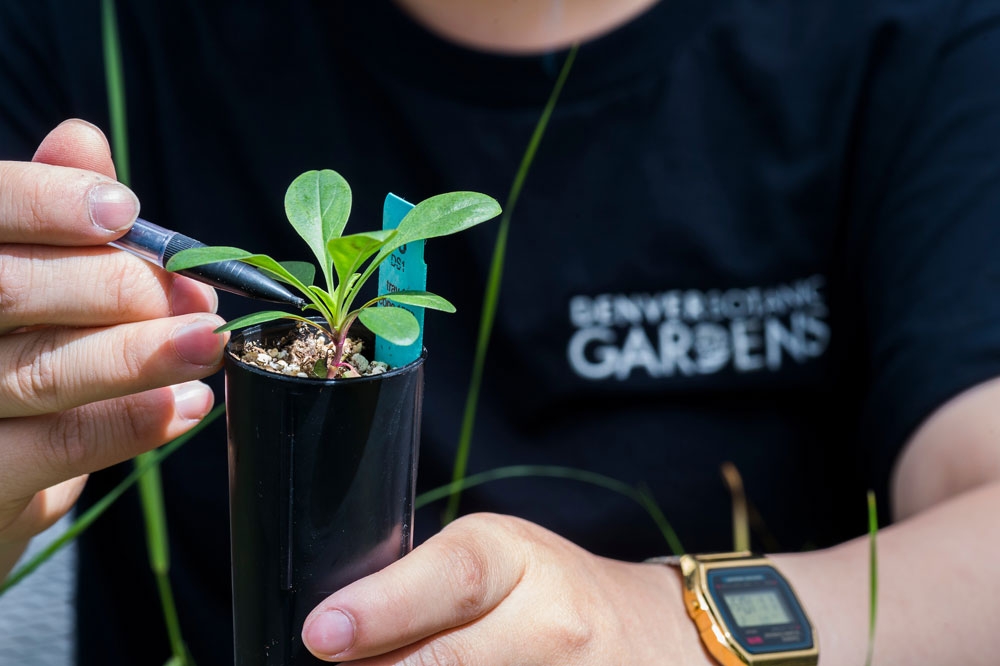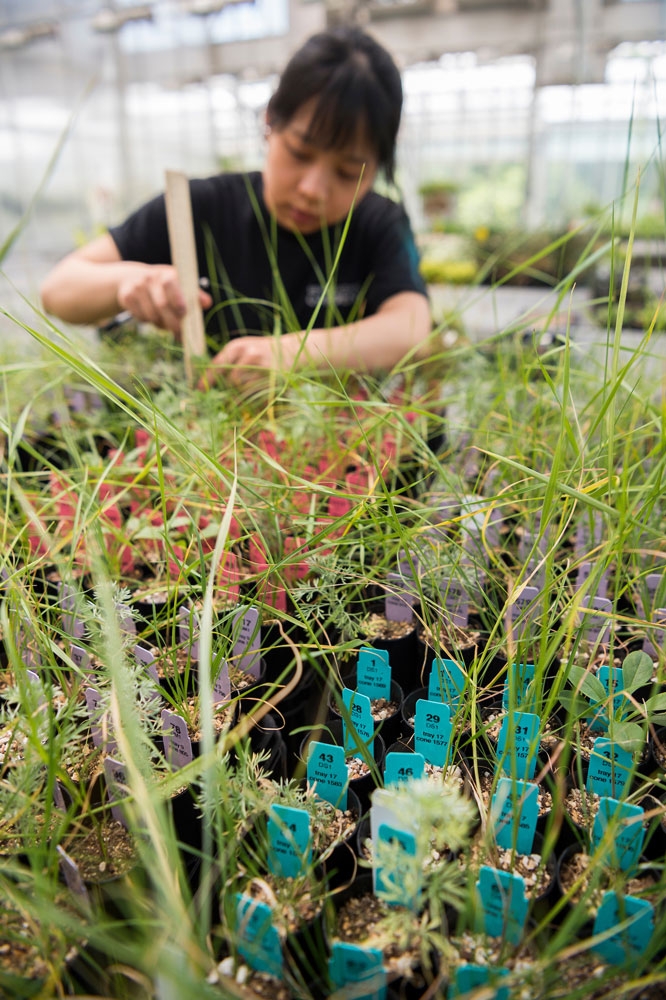Plant Selection for Restoration
This summer, I conducted a greenhouse drought experiment on seven plant species used in prairie restoration. The experiment tests the effect of drought on multiple wild populations of each species to understand how the environment where these seed populations were collected from relates to their performance in drought. The species studied were blue grama (Bouteloua gracilis), prairie junegrass (Koeleria macrantha), prairie sagewort (Artemisia frigida), Western wheatgrass (Pascopyrum smithii), Sandberg bluegrass (Poa secunda), dotted gayfeather (Liatris punctata), and Rocky Mountain penstemon (Penstemon strictus).
Restoration is the process of assisting the recovery of an unhealthy ecosystem. Where the seed comes from, which is known as the seed source, can affect how healthy and resilient the restored ecosystem will be. Most restorationists recommend using seed as close to the restoration site as possible because local populations are thought to be adapted to the environmental conditions. However, seed might not be available or the most local population might not be the best performing one. Climate change is also changing the environment so populations that are adapted to current conditions might not be adapted to future conditions. This research will improve seed sourcing guidelines by helping us understand how the environment of where seeds come from relates to their performance in current and future conditions.
The experiment lasted eight weeks and over 20 volunteers helped with transplanting seedlings and collecting data for the experiment! We are now analyzing the data and this month I will be presenting a poster at the annual Natural Areas Association conference in Bloomington, Indiana.
This blog post was written by Katherine Fu, Ph.D. student at University of Colorado Denver. Katherine is planning a career in plant ecology and conservation. Specifically, she is interested in focusing on research questions related to restoration, plant communities, succession and plant/animal interactions.
Gallery



Add new comment